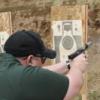Sorry, there's no link - it's a .doc file
“Yes on Measure Q & R.”
Fact SheetControlled Investment
• Measure R is an investment in the future of Sacramento County by the people who live here and those who visit. Measure R proposes a ¼ cent sales tax increase for a period of 15 years beginning on 1/1/07.
• Measure R would raise an additional $1.2 billion for Sacramento County improvements over the 15-year period, based on regional growth.
• Estimated impact of Measure R to the average consumer is $3 - $5 per month. This translates to $5 on a $2,000 purchase, roughly the cost of a cup of fancy coffee. This is a relatively small individual investment on a large return across Sacramento County.• Measure Q allows taxpayers to recommend spending priorities for Sacramento County. Measure Q is a non-binding, advisory vote on the uses of Measure R revenues, which include: local distribution to Citrus Heights, Elk Grove, Folsom, Galt, Isleton and Rancho Cordova to spend on local priorities needed to sustain current positive growth, and funding a sports/entertainment complex proposed at the former Union Pacific Railyards in downtown Sacramento.
Measure Q dedicates Measure R funds to areas that work together to improve quality of life and maintain Sacramento County’s growth momentum. The estimated funds for local cities and projects within the County: $594-$660 million, over 50% of the proposed increase. Estimated costs of a new sports/entertainment complex: $469-$542 million, less than 50% of the proposed increase. Measure R funds would be generated over 15 years; cities would receive their share in the first half of the timeframe. There are no limitations on how funds are spent, although the public is asked to prioritize quality-of-life projects including:
• Local road and transit projects
• Police and fire safety enhancements
• Libraries | Parks and recreation
• Children's services
• Local arts and cultural facilities
• Measure Q supports construction of a New Sports and Entertainment Complex at the formerly desolate rail yards in downtown Sacramento. Residents of Sacramento County and elected officials would design, build and own the Complex. As presently envisioned, facilities would be owned by the public through a Joint Powers Authority (JPA) comprised of representatives from cities in Sacramento County and the County Government. The venue would potentially be managed by Maloof Sports and Entertainment (MSE), owners of the Sacramento Kings, according to a 30-year agreement worth $122 million.
The total investment by MSE will represent approximately 26-30 percent of cost estimates for the Complex – which exceeds team-owner investments in Memphis, TN, Indianapolis, IN, and Charlotte, NC, and is comparable to San Antonio, TX.Revitalization and Redevelopment
•
If passed, Measure Q & R would anchor an estimated $4.5 billion in urban redevelopment projects and further revitalize and enhance downtown Sacramento. Measure Q & R would create jobs, bring millions of dollars in new revenue to Sacramento County, and revitalize a blighted area of downtown Sacramento – turning the now abandoned (and environmentally remediated) rail yard into a vibrant center of shops, restaurants, housing, sports, entertainment and a regional transportation hub to be enjoyed by all Sacramento County citizens and beyond.
• Measures Q and R would allow cities of Citrus Heights, Elk Grove, Folsom, Galt, Isleton and Rancho Cordova to retrofit infrastructure and social programs to keep pace with their growth and expansion. These cities are vulnerable to the same kinds of expansion pressures and downtown core deterioration as the City of Sacramento. Measures Q and R would increase funding to spend on local priorities as determined by city leaders and residents.
• Development projects that are contingent on Measures Q and R include new housing, up-scale retail, community arts resources, urban neighborhood expansion and environmental and public space upgrades. Planned housing includes 10,000 mixed-use high-density housing units, including townhomes, condominiums, rental units and affordable housing. Retail offerings include a sports and entertainment district expanding outward from the proposed arena, restaurants, office space, hotel(s) and upper-end retailer occupancy such as Bass Pro Shop. Urban neighborhood expansion includes a project called 5th Street Emporium, an urban village with 1-2 stories of retail capped above with loft-style office space and housing. Community arts projects include expanding current museums and adding a Railroad Technology Museum, the Central Station project which calls for preservation of seven (7) historic buildings dating from 1868 and a new state-of-the-art Performing Arts Center. Environmental upgrades include clean-up of the Railyards, a previous Superfund site, now 2/3 complete, extensive pedestrian-friendly public plazas/walkways to connect new development with adjacent urban areas, riverfront and urban waterway expansion, to incorporate more waterways into urban core and connect with the Sacramento riverfront.
• Measures Q and R will be the cornerstone of Sacramento County’s 25-year plan to modernize our transportation systems. These Measures will be used in part to fund and attract other investment to expand the regional transportation hub to accommodate growth, construct a new Sacramento Intermodal Transit Facility (SITF) and complete track alignment across the region to interconnect light rail, rail, bus routes, freight services and pedestrian linkages, and incorporate Amtrak’s popular “Capitol Corridor”, its third busiest route in the nation, and the Sacramento International Airport.
• Measure Q and R proactively assist Sacramento County in building out infrastructure to support growth and quality of life improvements in area communities, and helps all cities in the region to avoid urban decay.
• The uses of a new sports and entertainment complex – and related development and infrastructure – would contribute significantly to the overall health of Sacramento County’s economy. The Sacramento region would be seen as a sophisticated destination, with the amenities to be able to host international, national, regional, state and local events such as conventions, industry trade shows, large community and entertainment events, music concerts of all genres, fundraisers, theater performances, periodic sporting events such as rodeos, ice skating, boxing as well as the housing of the Sacramento region’s resident professional sports teams, including the Sacramento Kings men’s NBA basketball team and the Sacramento Monarchs women’s WNBA basketball team.
Proven Strategy
• Similar, successful investments have been made across the nation. There are dozens of successful city renaissance and redevelopment projects across the nation with modern sports and entertainment facilities anchoring their efforts. Here are just a few examples:
• Denver, Colorado is the only city in America to build three new sports stadiums within six years. In cooperation with new retail, transportation, housing and retail initiatives, Denver’s downtown core is experiencing marked improvements across many socioeconomic indicators.
• The residents of San Jose, California voted to build an arena with public funds almost two years before they were able to secure the rights to the San Jose Sharks hockey team. Private investment followed including $200 million corporate headquarters for Adobe Systems.
• In Kansas City, Missouri, the former home of the Kings, 20 years after the Kings left town they still do not have an NBA team. But next year Kansas City will be opening a beautiful new downtown – and a publicly-funded arena called the Sprint Center – as part of a $3 billion investment in their region.
• The Gund Arena and Jacobs Field contributed substantially to the resurgence of downtown Cleveland, Ohio.
• Other successful city plans with public investment in sports/entertainment anchors: Detroit, MI; Pittsburgh, PA; Memphis, TN*; Indianapolis, IN*; Charlotte, NC*; San Antonio, TX; Seattle, WA; San Diego, CA; Washington D.C.
* Most recent completed agreements in markets similar in size to Sacramento
Forward Planning
• Sacramento County residents must make a choice about the future and what kind of a community they want to build. Sacramento County residents face the risk of deterioration of infrastructure, urban centers and regional image if no investment is made. Measures R and Q would dramatically improve the region’s ability to attract and retain residents and investment, as well as improve quality of life for those who live and work here.
“Yes on Measure Q & R.”
Frequently Asked Questions• What is Measure R?
• Measure R proposes to increase the general sales tax in Sacramento County by ¼ cent for a period of 15 years beginning on 1/1/07. Measure R would generate approximately $1.2 billion over the 15-year period, based on regional growth.
• What is Measure Q?
• Measure Q advocates specific uses of Measure R, allowing taxpayers to recommend spending priorities for Sacramento County.
Top priorities as outlined in Measure Q are: local distribution to Citrus Heights, Elk Grove, Folsom, Galt, Isleton and Rancho Cordova to spend on local quality of life improvements, and the construction of a state-of-the-art sports and entertainment complex proposed at the former Union Pacific Railyards in downtown Sacramento.• What is the financial impact of Measure R to an average resident of Sacramento County?
• The estimated impact to the average consumer is $3 - $5 per month. Put another way, the increase would mean an extra $5 in sales tax on a $2,000 purchase.
• Why should Sacramento County residents vote YES on Measure R?
• Measure R is a responsible and urgently needed investment in the greater Sacramento County community. Measure R is a powerful economic engine that could rejuvenate downtown Sacramento and other local cities. The revenue generated by Measure R could create thousands of new jobs, bring new investment, new pride and national recognition to our region, create funding for new projects that ease traffic, improve local parks and schools, increase police and fire protection, improve neighborhoods and transform Sacramento’s blighted downtown rail yard into a vibrant new city center featuring shops, restaurants, housing, entertainment and a modern interconnected regional transportation hub to be used and enjoyed by all.
• Why should Sacramento County residents vote YES on Measure Q?
• Measure Q establishes a clear vision for Sacramento County’s future and directs new revenues generated by Measure R to be invested in projects that help improve our quality of life and increase the revitalization momentum we are beginning to feel throughout the region. Measure Q presents a balanced, responsible plan for investing in Sacramento County’s infrastructure and attractions which will in turn generate new investment. It gives Sacramento County residents the power to propose spending priorities. Measure Q turns an exciting vision for the future into reality.
• Why should taxpayers vote to increase their investment in Sacramento County now?
• Sacramento County is on a roll – indicators such as new housing and businesses are all positive. In order to shore up the infrastructure needed to sustain this expansion, local city governments need more funding. In addition, the broader plan for downtown Sacramento is to redevelop and refurbish the entire area in terms of infrastructure and image. Because much of Sacramento County’s growth is happening in the outlying areas, we need to be proactive today in maintaining a vibrant, cohesive downtown core. To do this, Sacramento must have the modern amenities to attract its own residents to live, work and utilize the downtown area, as well as entice new revenue, investment and energy from outside the region.
• Under Measure Q, how would Measure R funds be distributed?
• The Measure R funds for local cities within the County are estimated to be between $594-$660 million. Local city distribution would be more than 50% of the proposed increase. Measure R revenue would be generated over 15 years; cities would receive their share in the first half of the timeframe. The Measure R funds proposed for the new sports and entertainment complex are estimated between $469-$542 million, less than 50% of the proposed increase, and would be made available contingent on construction timelines.
• Are their other benefits to these Measures in addition to a new entertainment venue and increased local funding?
• If passed, Measure Q & R would jump-start and anchor an estimated $4.5 billion in urban redevelopment projects. There are proposals drafted to add housing, retail, performing arts venues, education and cultural attractions, pedestrian-friendly public plazas and green spaces, urban waterways, environmental improvements and state of the art transportation upgrades. This is in addition to funding under these Measures for local road and transit projects, police and fire safety enhancements, libraries, parks and recreation, children's services, local arts and cultural facilities and the new sports and entertainment complex.
• What would the Measure Q Sports and Entertainment Complex be used for?
• The venue would be used for multiple and varied local, regional, state, national and international events. Sacramento will be able to host conventions and conferences of all sizes, from all over the world, industry trade shows, large community and entertainment events, music concerts of all genres, fundraisers, theater events and other sporting events such as rodeos, ice skating and boxing. The complex would also house the region’s resident professional sports teams, including the Sacramento Kings men’s NBA basketball team and the Sacramento Monarchs women’s WNBA basketball team.
• Who would own the Measure Q Sports and Entertainment Complex?
• The County/City of Sacramento would design, build and own the Complex. As presently envisioned, the new facilities would be owned by the public through a Joint Powers Authority (JPA) comprised of representatives from cities in Sacramento County and the County Government.
• Who will manage the Measure Q sports and entertainment complex? Will the taxpayers have to pay for its operation?
• As currently envisioned, Maloof Sports and Entertainment, Inc. (MSE) will manage the new venue on behalf of the JPA and general public. A proposed agreement has been outlined with MSE (owners of the Kings/Monarchs). MSE will enter into a 30-year lease agreement, with total lease payments estimated at $122 million. MSE would pay $20 million up front, intended to fund a capital reserve for future repairs to the facility, however, the JPA reserves the right to use these funds for other purposes. MSE will repay a $72 million loan to the City of Sacramento. MSE will retain all facility revenues, including naming, concessions and parking.
MSE, not taxpayers, will pay all operating costs, estimated at $10 - $12 million per year.• Will the Kings will stay in Sacramento?
•
If Measures Q and R pass, according to the tentative agreement between Sacramento County and Maloof Sports and Entertainment, MSE will agree not to relocate the Kings and/or Monarchs for 30 years.• What if the Measures pass and the Kings and Monarchs leave anyway?
• The benefits of a redevelopment and revitalization of downtown Sacramento and other local communities succeed far beyond one stakeholder or two. The Sacramento Convention and Visitors Bureau believes “so strongly in the likely economic impact of this project, that [the Board] would support a new, publicly financed sports and entertainment facility even without a professional sports team as the anchor tenant.” Other cities have proven this is a successful strategy. The residents of San Jose voted to build an arena with public funds almost two years before they were able to secure the rights to the San Jose Sharks hockey team, and private investment followed.
In Kansas City, the former home of the Kings, 20 years after the Kings left town they still don’t have an NBA team. But next year Kansas City will be opening a beautiful new downtown – and a publicly-funded arena called the Sprint Center as part of a $3 billion investment in their region. • Have similar plans with large arena investments worked elsewhere?
• There are dozens of successful city renaissance and redevelopment projects across the nation with world-class sports and entertainment facilities at the core of their projects. Here are a few examples:
o Denver, Colorado - Denver is the only city in America to build three new sports stadiums within six years. In cooperation with new retail, transportation, housing and retail initiatives, Denver’s downtown core is experiencing marked improvements across many socioeconomic indicators.
o Cleveland, Ohio - The Gund Arena and Jacobs Field have contributed mightily to the resurgence of downtown Cleveland, and have been instrumental to refurbishing Cleveland’s image as a destination for tourism and business.
o Seattle, Washington – Qwest and Safeco Fields are two financially successful stadiums in a previously deteriorating sector, anchoring planned progressive high-density and low-income urban housing in addition to restaurants, retail and tourism tie-ins such as cruise ships, and other growth.
o Pittsburgh, PA; Memphis, Tennessee; Indianapolis, Indiana; Charlotte, North Carolina; San Antonio, Texas; Kansas City, Missouri; San Jose, California
• Why should we build a new sports and entertainment facility when we have Arco Arena?
• A new sports and entertainment complex will significantly enhance both infrastructure and image for the Sacramento region. Plus, having a large public venue within walking distance of downtown creates an ease and level of use that is unattainable with the Arco Arena. And finally, the Arco Arena is 18 years old, a substandard facility and one of the oldest NBA facilities in the nation. And finally, from an image standpoint, a new sports and entertainment complex would be a catalyst for the Railyards area and put a vibrant new face on the Sacramento region. Thousands of people will be drawn to Sacramento simply because of the “buzz” over this new urban space.
source:
http://www.metrocham...sharethevision/























